The two ancient capitals in Japan are Kyoto, the ‘most Japanese’ of all cities, and Nara with a long and rich history. Both are popular destinations for many tourists from home and abroad, and during cherry blossom season lots of visitors descend on these cities for hanami (cherry blossom viewing). Although popular cherry-blossom viewing spots will be crowded, you can enjoy spectacular cherry blossoms and scenery at those locations. To avoid the crowds, you should hire a charter vehicle and head to the outskirts of Kyoto early in the morning or at night.
Kyoto’s popular hanami spot ranking
1: Ninna-ji Temple (Sakyo Ward, Kyoto city) http://www.ninnaji.jp/
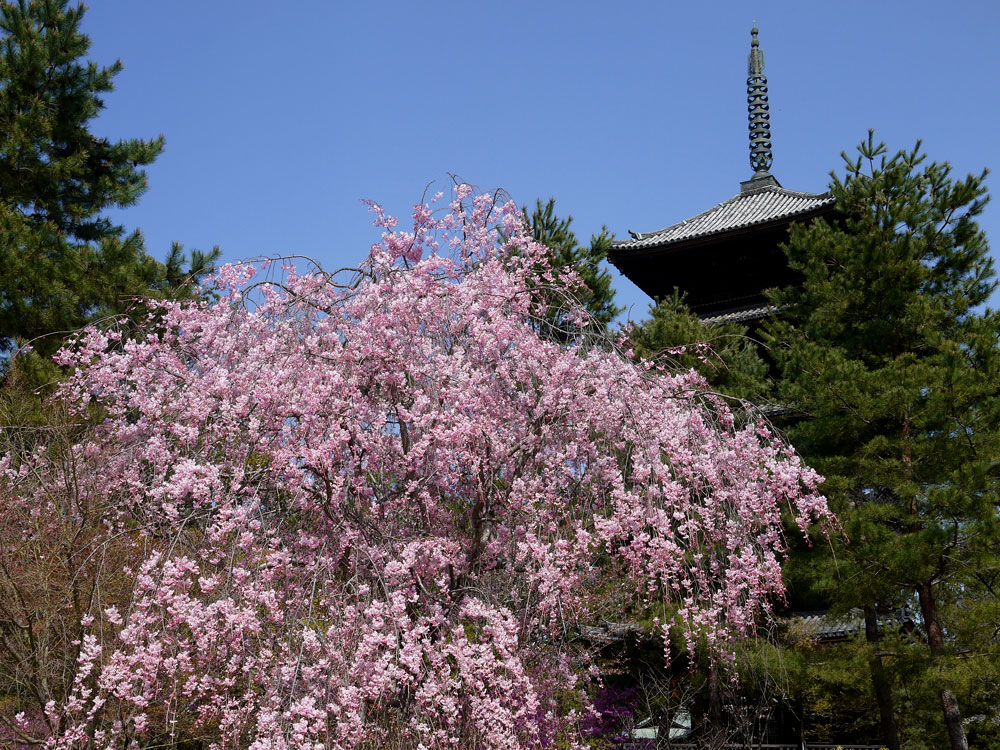
■ Highlights: Cherry blossoms at Ninna-ji Temple get a lot of coverage in the Japanese media. This historic temple was established in the year 888 and is designated as world heritage site and a national treasure. The Somei Yoshino cherry trees front in front of Kondo and Shidarezakura (weeping cherry) in front of the bell tower are just breathtakingly beautiful. One of the reasons for Ninna-ji’s popularity is that you can see the cherry blossoms up against the background of the five-storied pagoda. Since the Omurozakura variety growing near the middle gate are usually in bloom until mid-April, you can still enjoy spectacular cherry blossoms even if you miss the typical blooming season.
Opening hours: 9:00am-5:00pm
■ Typical Blooming Season: Late March to early April
Access : https: //goo.gl/maps/CA6kcntwqnL2
<Area information>
■ Ryoan-ji: http://www.ryoanji.jp/smph/
The famous kare-sansui (dry landscape) rock garden at this temple is thought to be a masterpiece, and it is registered on the World Cultural Heritage List. There are 15 stones in white sand, which are arranged so that you can only see 14 stones at any one time at any angle you are viewing the garden from. This is famous mystery of the rock garden asks visitors to figure out the of meaning of this mystery themselves. This is a site that encapsulates the idea of Japan’s refinement and restraint. Since Ryoan-ji is located near Ninna-ji Temple, why don’t you pay a visit when you come to see the cherry-blossoms?
2: Daigo-ji (Fushimi Ward, Kyoto City) http://www.daigoji.or.jp/

■ Highlights: This temple is a World Cultural Heritage site and one of Kyoto’s famous historic sights. About 800 cherry trees are planted in the vast premises of the temple, and the varieties include Somei Yoshino, Yamazakura and Yaezakura. Oobenishidare and Ooyamazakura varieties around Sanbo are magnificent when they are in full bloom. Since this temple is located far from the station, it will be easier to use car for transport.
Opening Hours: 9:00am ~ 5:00pm (Closes at 4:30pm between December 11 until end of February)
※ Ticket booth closes 60 minutes prior to gate closure, entry to various areas closes 30 minutes prior to gate closure.
■ Typical Blooming Season: late March to early April
Access: https://goo.gl/maps/pefQ4yKycYT2
<Area information>
■ Fushimi Inari Taisha Shrine: http://inari.jp/
This is a popular tourist attraction for both local and foreign tourists in the Fushimi area of Kyoto. Lovingly called “Oinari-san” by visitors, this shrine enshrines the fox and the worshippers come here to pray for bountiful harvests, business prosperity and safety of their home and family. The most famous structure that attracts the tourists is the Senbon Torii, a fantastic sight where thousands of vermillion torii gates create a tunnel. Since it is open all day, if you want to take pictures of the torii you should come early in the morning. If you hire a charter car you can be transported smoothly whether it is early morning or at night.
3: Kiyomizu-dera Temple (Higashiyama Ward, Kyoto city): https://www.kiyomizudera.or.jp/
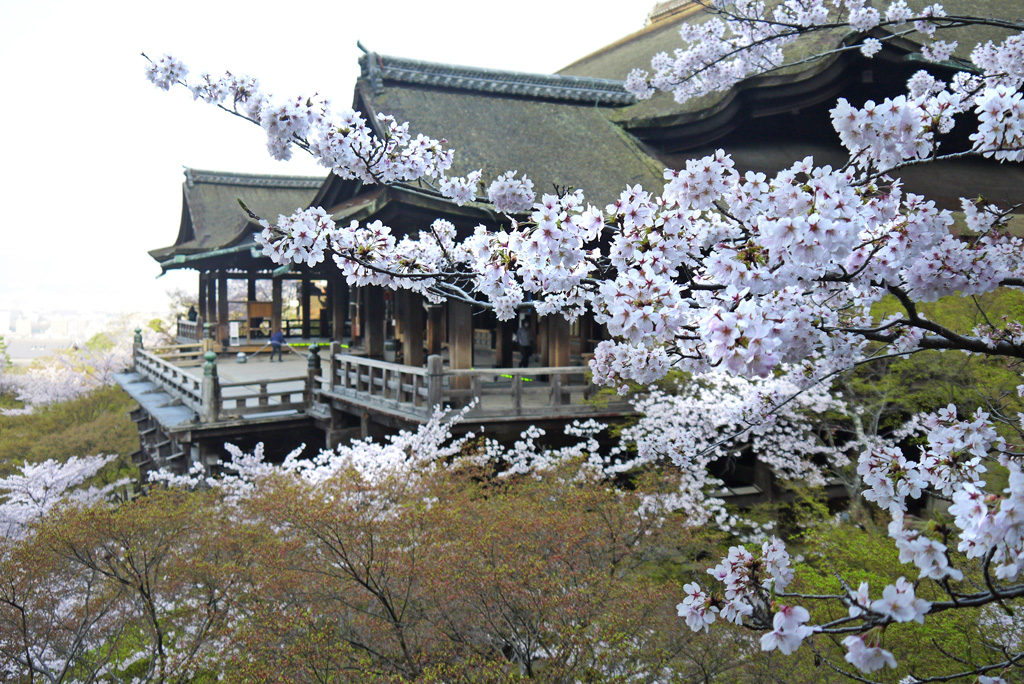
Kiyomizu-dera Temple is a tourist attraction that you should visit at least once in Kyoto, and it is always crowded with worshipers. Approximately 1500 cherry trees are planted mostly around the main hall, and many visitors come to see the cherry blossoms every year. “Shimizu’s stage” built to protrude on the slopes of the mountain is a temple architecture that does not use any nails at all. From the stage you can see the Kyoto city center, and the view of the cherry blossoms from here will surely become one of the lasting memories in your life. You can comparatively take a more relaxing look around the temple if you visit early in the morning. You can also enjoy a fantastic view when it is lit up at night.
Opening Hours: 6:00am ~ 6:00pm ※The times for the illumination at night is different each year, so please check prior to your visit.
■ Typical Blooming Season: late March to early April
Access: https://goo.gl/maps/ubyfKZLkPDS2
<Area information>
■ Ninenzaka · Sannenzaka: https://goo.gl/maps/FSt9BcFwS9o
Along the approaching path from Yasaka Shrine to Kiyomizu Temple, eating and drinking establishments, cafés and souvenir shops line the street. As you explore, you can snack on rice crackers and rice cakes or maybe enjoy Japanese style sweets at the cafe. There are also shops where you can rent kimonos or have maiko experiences, so why not explore Kiyomizu-dera Temple dressed in a kimono?
4: To-ji (Minami Ward, Kyoto city) http://www.toji.or.jp/
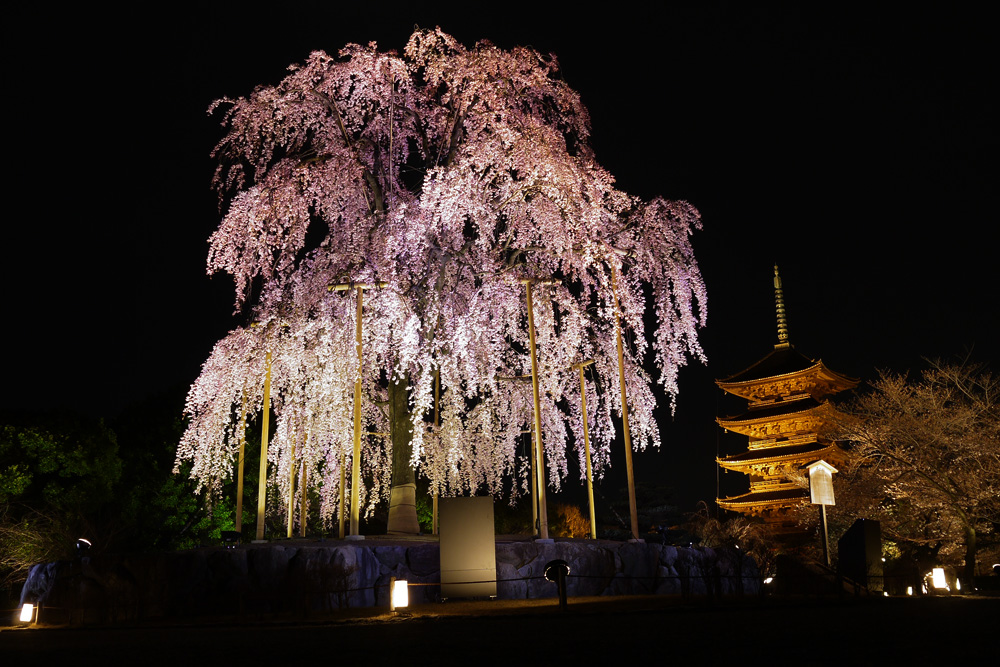
■ Highlights: One of the temples designated as a world heritage site, this temple has many cultural assets designated as national treasures such as the five-storied pagoda, Miedo and Kondo. It is also popular as a cherry-blossom viewing spot, with about 200 Kawazuzakura and Somei Yoshino cherry blossoms, among which the Shidarezakura (weeping cherry) nicknamed “Fujizakura” is the most famous. Its contrast with the five-storied tower when in full bloom is a stunning sight. During the season it will be lit up from 6:30pm to 9:30pm, so you can enjoy the different type of beauty from cherry blossoms during the day.
Opening Hours: 5:00am ~ 5:00pm ※The times for the illumination at night is different each year, so please check prior to your visit.
■ Typical Blooming Season: late March to early April
Access: https://goo.gl/maps/zwQ4dpFkxzN2
<Area information>
■ Kyodo Gangu Hirata: https://www.kyodogangu-hirata.com/
This store located near Omiya Higashi Dori in To-ji displays more than 1,500 Japanese traditional toys and miscellaneous goods. Not only you can enjoy viewing antique figurines and masks here, you can also get rare toys that are no longer being manufactured. It’s a spot popular with people in the know, along with foreign tourists.
5: Philosopher’s Path (Sakyo Ward, Kyoto City): https://tetsugakunomichi.jp/
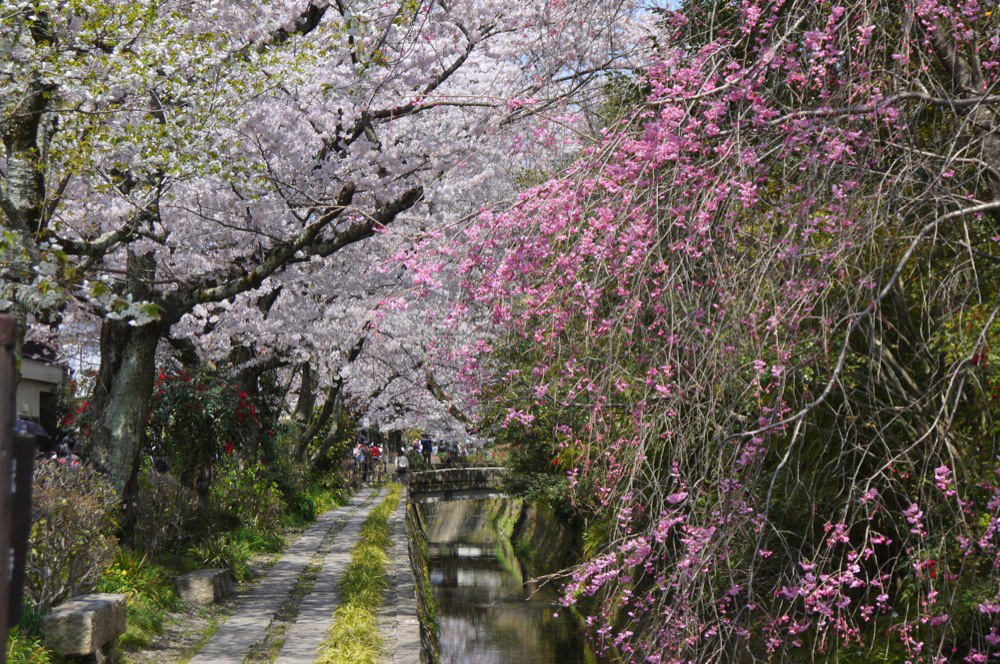
■ Highlights: This is a path that leads from the famous sightseeing spots Nanzen-ji to Ginkaku-ji, perfect for you to enjoy the beauty of nature in each season. The path is being protected by locals, and different kinds of cherry blossoms such as Somei Yoshino, Yamazakura and Oshimazakura are planted on both sides of the waterway. Since it is dotted with restaurants, cafes, souvenir shops and pottery shops, it is a street that you want to take your time exploring. As public transport is somewhat inconvenient, using a charter vehicle is recommended.
Access: https://goo.gl/maps/FtmxbbML6222
■ Typical Blooming Season: late March to early April
<Area information>
■ Ginkaku-ji (Shokoku-ji, Ginkaku): http://shokoku-ji.jp/g_about.html
Ginkaku-ji is a historic Zen temple built 500 years ago. It is a famous sightseeing spot together with Rokuon-ji Kinkaku in Kita Ward, Kyoto City. In contrast to the Kinkaku, this temple has a calm atmosphere and you can enjoy a stroll with mountains in the background. As it closes relatively early, please make sure to visit with plenty of time to spare.
Opening Hours: Summer Season (March to November) 8:30am-5:00pm
Winter Season (December to February) 9:00am-4:30pm
Avoid the Crowds! Kyoto’s Secret Hanami spot
1. Gion Shirakawa (Higashiyama, Kyoto City)
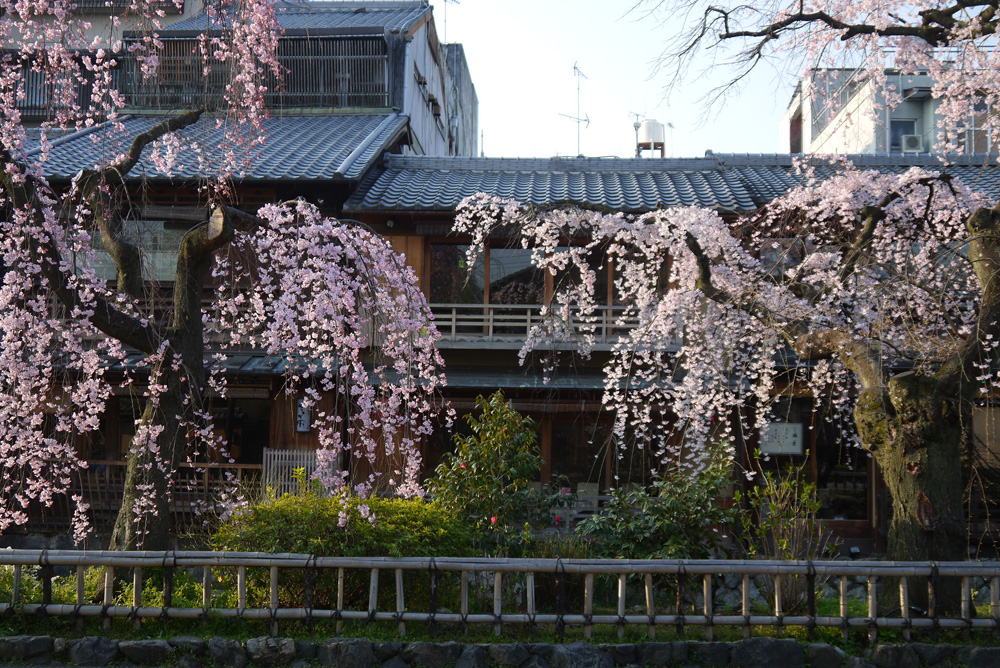
Along the Shirakawa River near the downtown area of Kyoto, various kinds of cherry blossoms are planted here including Somei Yoshino, Shidarezakura and Yamazakura. Although this is not a large area, the fantastic view of the cherry blossoms together with a shrine, bridge and cobblestone brings many local visitors every year. It will be illuminated at night, but the details are subject to change each year so please double check in advance.
■ Typical Blooming Season: late March to early April
■ Why is it less crowded?
Since it is close to the downtown area, there tend to be fewer tourists on weekday mornings. Why don’t you come for a stroll here in the morning before you leave for sightseeing and enjoy the cherry blossoms in a scenery that screams ‘Kyoto’!
■ Access: https://goo.gl/maps/6fK313eV8tv
2. Hirano Shrine (Kita Ward, Kyoto City): http://www.hiranojinja.com/
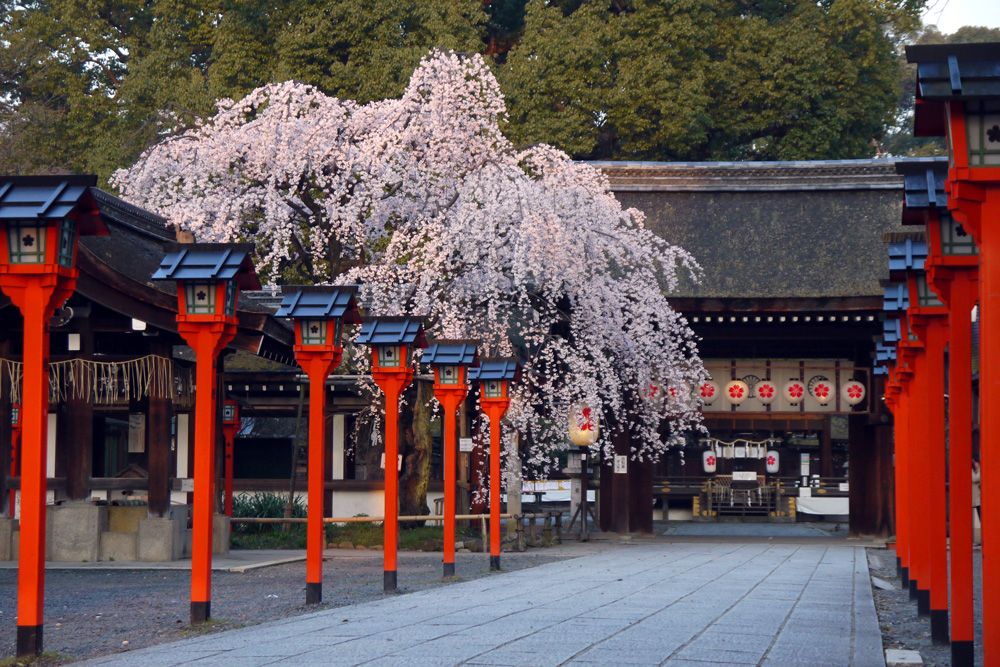
At Hirano Shrine, there are about 400 trees of 50 different varieties of cherry, including Somei Yoshino, and the sight of the cherry blossoms in full bloom is stunning. Sakigakezakura that originated from the Hirano Shrine blooms the earliest, and it signifies the beginning of the cherry-blossom season in Kyoto. The shrine itself has a long history, and it is spectacular to look at as a cultural asset.
Opening Hours: 6:00am ~ 5:00pm (※Closes around 9:00pm during cherry blossom season. Please double check as it is subject to change each year.)
■ Why is it less crowded?
As this location is more famous for its cherry blossoms at night, there are relatively few people during weekday mornings. It is open from 6:00am, so it might be better to stop by before you start your sightseeing for the day.
■ Access : https://goo.gl/maps/5bZJphzjt9p
Tips and Tricks to avoid the crowds
■ Go cherry blossom viewing early in the morning
Many of the shrines and temples in Kyoto open early in the morning, with most opening between 5am-7am. To avoid congestion, get up early and explore some cherry blossoms viewing spots in the morning, so you can get a better look at the flowers. If the locations are less crowded, you can take photos more freely. If you use a charter vehicle, you will be able to follow an efficient schedule like cherry blossom viewing in the morning and sightseeing in the afternoon.
■ Go to places where it is hard to reach by trains or buses
In Kyoto, where sightseeing spots are scattered all around the city, most tourists visit the locations using public transport like trains and buses. Therefore, the cherry-blossom viewing locations situated far from the nearest station is relatively vacant. If you use a charter vehicle, you will have no issues getting to hanami spots far from urban areas, and you can leave immediately when you are finished. You can also tour efficiently by narrowing down the locations in the schedule.
